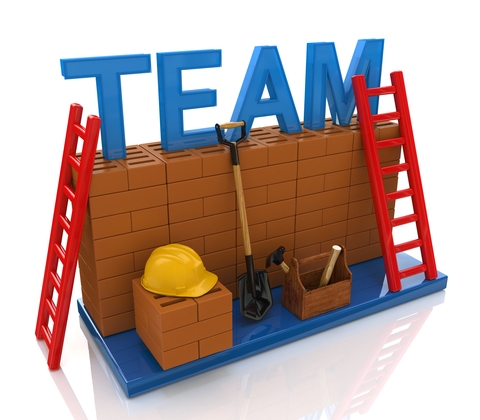
The basic principles required to build a Super Team apply equally in the world of sports and business. Professional baseball players have just begun their regular season. Are you ready to help others build a Super Sales Team in your organization?
Building a super team is formulaic. Below is my winning formula; feel free to develop your own scale in applying this mathematic equation to help others build an awesome sales organization:
ST = E(e1*e2) *T(c1*c2)
BSF
ST = Super Team: Just like in any competitive sport except golf, a high score is good.
Employee Factors (E)
e1 = Employee effectiveness. This factor speaks to the ability of an employee to perform their job. To maximize improvement in the employee effectiveness factor, create a personal development plan for each employee; everyone has specific strengths and weaknesses. Don’t apply a “one size fits all” approach to effectiveness training. Bonus tip: Improving a salesperson’s ability to be an effective listener enhances their ability to carefully understand a buyer’s specific pain/need while continuing to build a relationship based on transparency and trust.
If employees are not effective at their job, it doesn’t matter how engaged and excited they are to be working in the company. Having said that, employees with the right personal attributes can be taught to become effective salespeople!
e2 = Employee engagement. This factor speaks to how excited an employee is to do their job. A recent survey by the Gallop Institute determined that over 70 percent of employees are disengaged at work and of this group, 25 percent are actively disengaged, meaning they are proactively trying to damage their company. The typical company has a huge problem in this area. To increase employee engagement, one tip is to work towards developing a strong emotional connection as to why the company product(s) save lives, improve health, quality of life, etc. Employees who emotionally engage with the company mission and product(s) tend to be more productive and stay longer in their job than those who are strictly focused on achieving metrics such as sales calls, new prospects, proposals, closed accounts, etc. Higher productivity and lower turnover translates into higher company profits.
If an employee’s engagement factor is close to “zero,” then count on this employee being a huge detriment to the team. An old Osmond Family song from the 1970s was entitled, “One Bad Apple Can Spoil the Whole Bunch.” Actively disengaged employees typically cannot be turned around to become engaged employees. The quickest, easiest and most effective approach to preserve the team and make it collectively better is to let actively disengaged employees go so they can find another company that is a better fit for them!
Team Factors (T)
c1 = Culture. This factors speaks to values, behaviors and beliefs of the sales organization. Tip to consider: A company culture that honors honesty, transparency, trust and desire to build long and meaningful relationships translates into happier employees, loyal customers and positive word of mouth. To illustrate how a healthy company culture can accelerate getting from “Point A to Point B,” I like to describe what a crew (rowing) team looks like when they are rowing in perfect synchronicity through waters of a calm lake at 5 a.m. On the other hand, an unhealthy company culture can metaphorically be illustrated by imagining the same team rowing in choppy waters during a storm. “Team storm” will struggle mightily trying to arrive at their (goal) destination.
To improve the health of a sales team’s culture, I recommend group training to identify positive and negative attributes/norms related to company culture that the entire team collectively agrees to own and protect. A poor company culture ensures that employees will become disengaged quickly. No company can afford the cost of an unhealthy company culture!
c2 = Communication. Open and transparent communication is the quickest and most effective way to get better together. Siloes are meant for grain; not for sales teams. Break down communication barriers and accelerate group learning; sharing what works and doesn’t work so that the team can adapt and innovate quickly. A rising tide lifts all ships!
One exercise I like to teach is “The Circle of Awesome.” At team sales meetings, have each person identify something that someone else did on the team that helped meet company goals, assist a fellow employee, made a customer absolutely thrilled and ecstatic, etc. The idea is to teach employees how to publicly praise others and reward awesome behavior. After doing this a few times, the activity becomes excitingly contagious because everyone looks forward to creating positive energy in the room.
A second layer of team building through open and transparent communication can be added after an environment of trust is built. Following The Circle of Awesome exercise, have each person identify one thing they personally will do to improve and help the team get better. One sign of a healthy sales culture is when open and transparent communication engenders the feeling that an employee’s greatest fear isn’t letting down their boss, but instead letting down the team. The highest performing sports teams create this deep level of communication and trust and you can too!
BSF
Last but certainly not least is the Bullsh*% Factor (or BSF.) To dramatically reduce the Super Team score, find ways to increase BSF in your sales organization. Conversely, drive BSF close to zero and the Super Team score skyrockets. It’s a mathematical certainly!
A great group exercise is to have everyone participate in identifying what BS looks like at work; develop a plan to gradually eradicate these distractions and encourage everyone on the team to hold each other accountable. Creating a working environment devoid of BSF; inspired by mutual accountability in pursuit of mutually desired goals and outcomes is something everyone will rally around. Except that is by the actively disengaged employees, who really should be working at another company!
Earl Bell is the principal and founder of EARLBELL.com and the Winning in Business Master Academy. He is the author of Winning in Baseball and Business, Transforming Little League Principles into Major League Profits for Your Company. Earl offers a complimentary PDF copy of his book at www.EARLBELL.com/win. Email Earl at Earl@EARLBELL.com.








